NZIA Canterbury Architecture awardees signify Christchurch's endurance in post-quake rebuilding
By Bustler Editors|
Wednesday, May 27, 2015
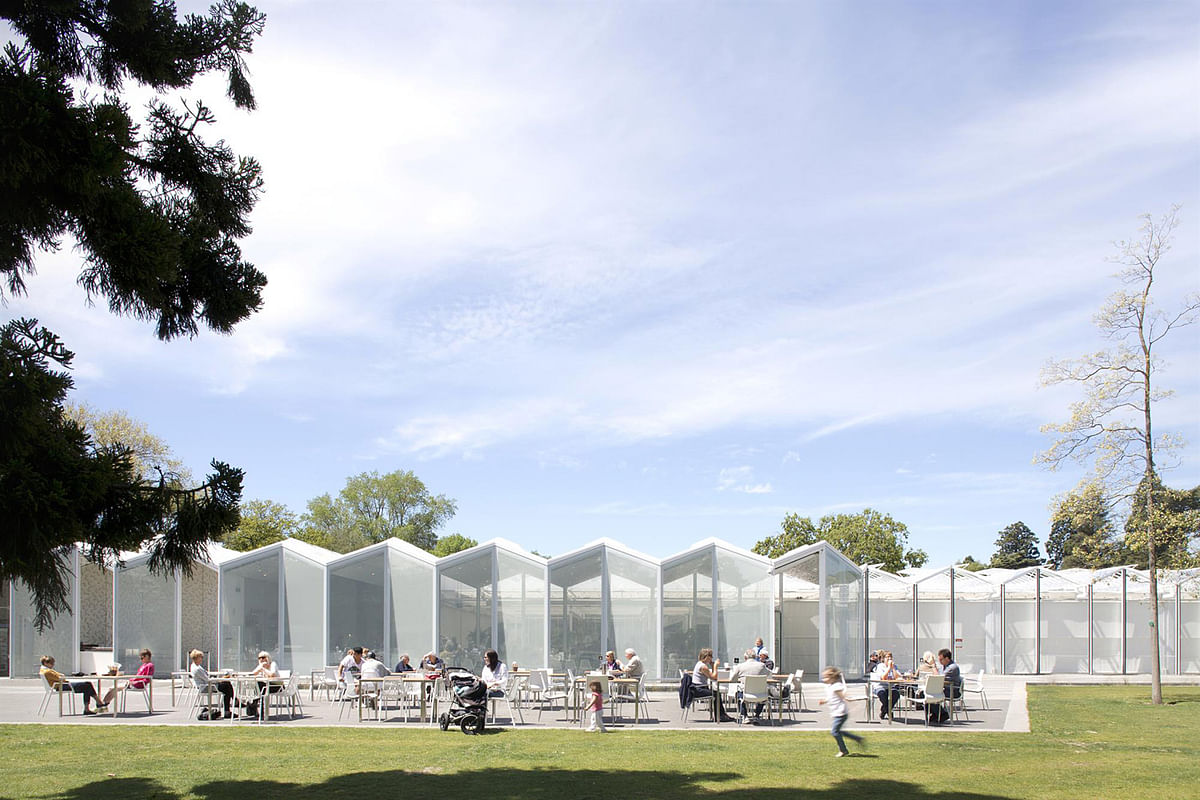
Related
As we already know, the city of Christchurch in New Zealand has had a few tough years since the earthquakes in 2010-2011. Despite the hardships that come with rebuilding a city, local communities continue to push forward. These rebuilding efforts had a strong presence in the New Zealand Institute of Architects' 2015 Canterbury Architecture Awards, which highlights some of the Canterbury region's best architecture over the past year.
Twenty-five projects were recognized during the Awards event at the Christchurch Botanic Garden Visitors Centre. The winning projects will then be considered for competing in the highest tier of the NZIA's award program, the 2015 New Zealand Architecture Awards.
Scroll down to see a selection of the Canterbury Award-winning projects.
Public Architecture: Christchurch Botanic Gardens Visitor Centre by Patterson Associates
Project summary: "The Christchurch Botanic Garden Visitors Centre is a thoroughly contemporary building that strongly connects with the typology of traditional garden glasshouse buildings. The structure’s long form is an almost ethereal presence within the greenery of the gardens. True to type, everything has been painted white. Yet by adapting a commercial glazed greenhouse system, the repeated angular bays and serrated roof profile have been affordably achieved with elegance and meaning. Appropriately, botanic themes inform other elements: the patterned precast concrete is dappled leaf shadow, and the carpet pattern comprises blown-up plant microbes. The result is a thoroughly integrated work of architecture."
Public Architecture: Ruataniwha Civic Centre by Warren and Mahoney
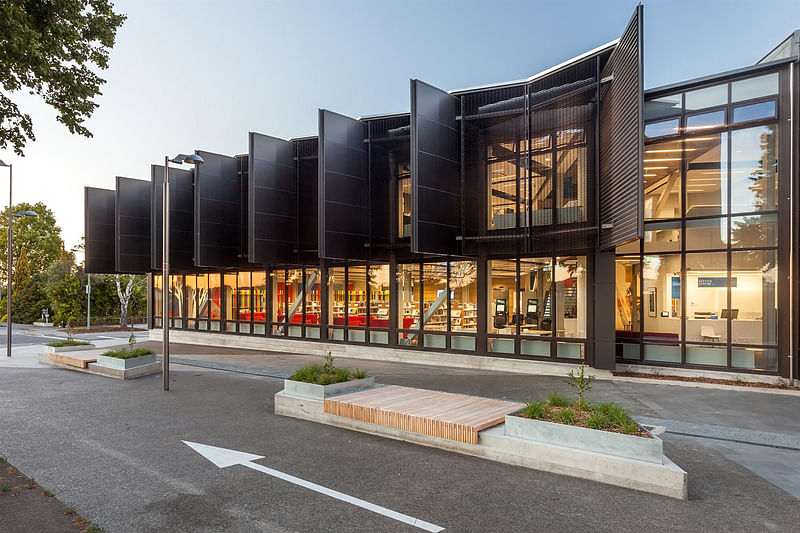
Project summary: "This distinctive and inviting civic building provides a much-needed boost to Kaiapoi, one of the areas most affected by the earthquakes. More than just a library, the centre presents an impressive range of learning and recreational facilities, including a double-height display area and an array of much-needed community meeting space. Movement is a key theme. Raised over a generous atea space and main entry, a delicate white-steel canopy provides a sense of identity without overwhelming the streetscape. Facing the river, bold oversized screens cradle the interior from direct sun while opening up views of the river. This valuable civic amenity has transformed the township of Kaiapoi."
Commercial Architecture: Christchurch Eye Surgery Clinic by Wilson & Hill Architects
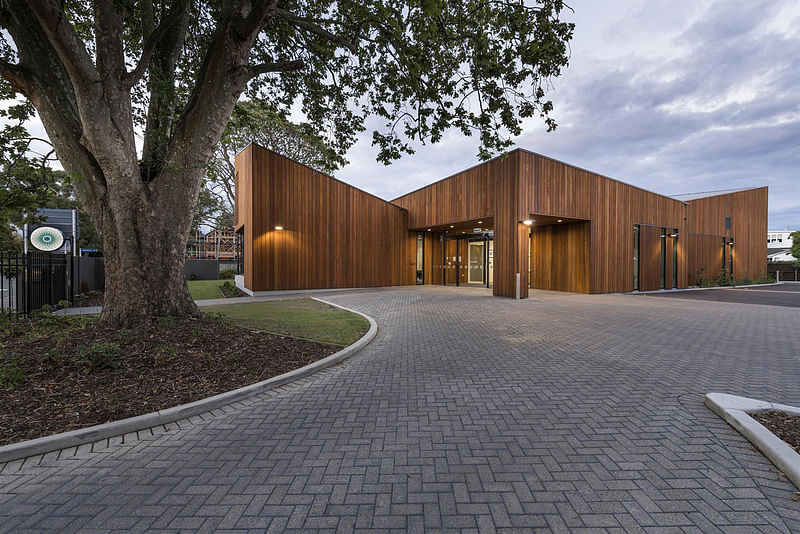
Project summary: "This building is the exemplary result of a post-earthquake collaboration between ten medical professionals who previously practiced from separate consulting rooms. The state-of-the-art medical facility, in Merivale, is quite different in appearance to the older residential villas which are prevalent in the neighborhood. Although assertive in form, the clinic engages positively with its setting. The simple, strong building shapes are uniformly clad in red cedar weatherboards, giving the building a natural feel, and the architectural detailing is simple, crisp and sophisticated, inside and out."
Education: Kidsfirst Diamond Harbour by Opus Architecture
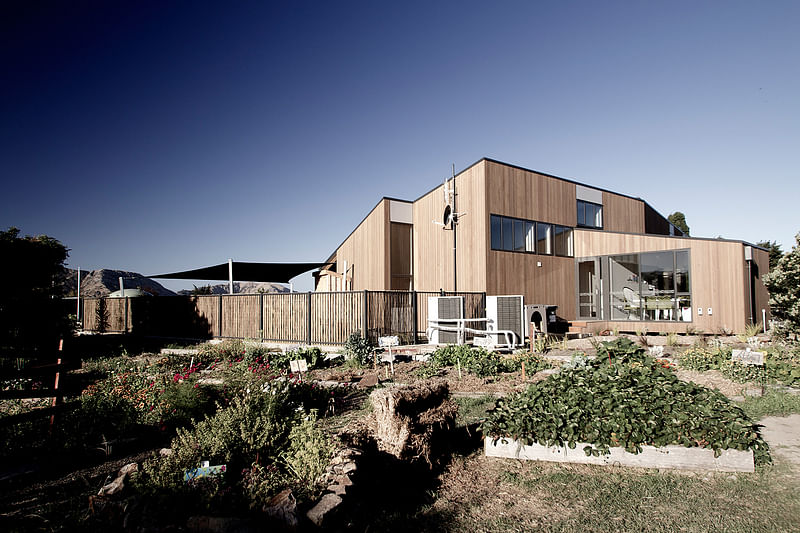
Project summary: "A dense program has been cleverly resolved in this cedar-clad childcare facility. A kink in the otherwise linear floor plate provides two independent learning areas that are visible from carefully situated staff areas. The outdoor space is almost more significant. Engineered timber portal frames cantilever past the north façade covering a broad veranda. This space is vital to ideas of flexible learning, where ease of transitioning between interior and exterior environments is as fluid as the surrounding rolling landscapes. Through the intelligent use of space, light and texture, the architects have crafted special spaces for children and adults alike."
Enduring Architecture: Munro House by Warren and Mahoney
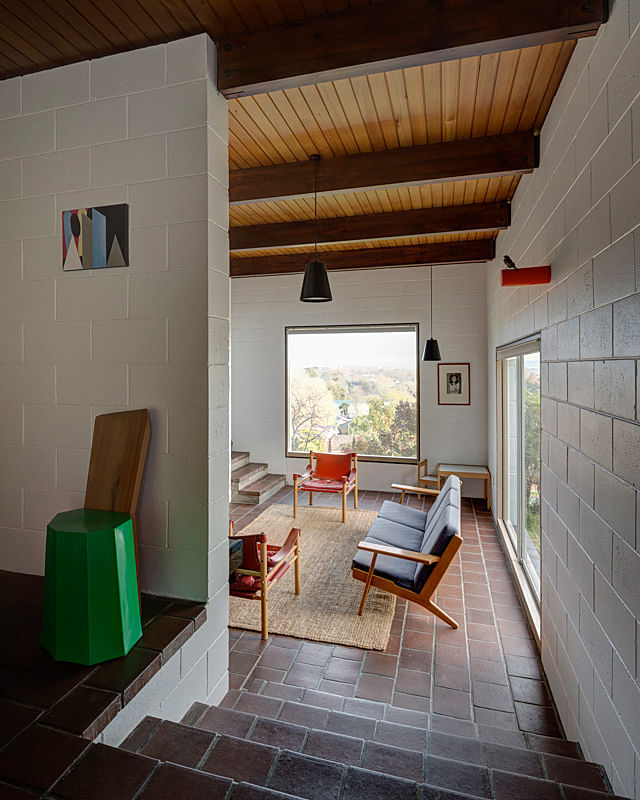
Project summary: "The Munro house exterior is beautifully proportioned: the size, shape and arrangement of the three windows on the north elevation is close to perfect and the materials and detailing on the outside are absolutely consistent with Warren and Mahoney houses of this era. The ground floor living spaces meander and flow down from entry level, contrasting tight corners with double-height spaces and a broad view out to the north. Throughout, there is a ‘lightness of touch’ clearly evident in project architect Nicholas Kennedy’s drawings and in the design elements on which he contributed. Kennedy died in his early thirties but showed incredible architectural talent. Over the past five years the owners have painstakingly restored the Munro House, bringing it back to original condition."
Heritage: Isaac Theatre Royal by Warren and Mahoney

Project summary: "The restoration and rebuild of the Grade-A heritage-listed Isaac Theatre Royal, the only surviving Edwardian-style theatre in the country, has proven the darling project in the city’s earthquake recovery process. The architect’s laudable approach to heritage architecture is respectful and skillful, with many key heritage features of the existing building – including the elaborate façade, marble staircase and the famous 1908 hand-painted canvas ceiling dome – painstaking restored. Structural strengthening has been concealed with precision, the new pitch of the seating circle provides a better viewing angle, and the contemporary additions have been designed with clarity and functionality. The heritage value of this project is priceless and its undeniably charming presence in the city will be enjoyed by generations to come."
Housing: Villa Close by Thom Craig Architects

Project summary: "Four gabled pavilions are positioned to create two outdoor living courtyards – one sheltered from the easterly and the other from the nor’west wind. The modest exterior disguises a thoroughly sophisticated and generously scaled house. The white-painted, cedar-clad forms have a spare simplicity which suggests a Scandinavian influence, but which also refers to Canterbury’s colonial and modernist residential heritage. Each pavilion is linked by a glazed walkway, synthesising the home’s requirements for light, privacy, outlook and ventilation, and providing an eventful journey through the house. The result is a relaxed and comfortable house that is well planned and detailed."
Housing Additions and Alterations: Loudon Homestead Alteration + Extension by Sheppard & Rout

Project summary: "The Loudon Homestead is one of an ensemble of buildings that form a gracious residence. The arrival sequence, past agricultural sheds and through an arbour walkway, has been expertly planned, with entry between what appears to be a colonial cottage and a square farmhouse. The original picturesque cottage has been meticulously refurbished and extended, while the farm house structure has been gutted to create a large library room lined with books that, despite its large volume, still manages to feel cosy thanks to the warm timbered ceiling, central lantern skylight, and rustic fireplace."
Small Project Architecture: Lyttelton Studio Retreat by Bull O’Sullivan Architecture

Project summary: "Modest in form yet ambitious in detail, this tiny retreat is a very personal statement by a talented architect. The exterior is robust – anodised aluminium cladding, recycled bridge timber car deck – and built to weather severe natural events, while the interior is highly crafted, comfortable, cosy. The full-height flush-glazing of the upper studio space captures breathtaking panoramic views of Lyttleton and the harbour. Undulating ceiling battens enliven the long space and reinforce the focus to the view. The lower level resembles a ship’s quarters, with a quirky kitchen, simple sleeping spaces for visiting staff, and a beautifully detailed bathroom."
All images courtesy of The New Zealand Institute of Architects.

Share
0 Comments
Comment as :